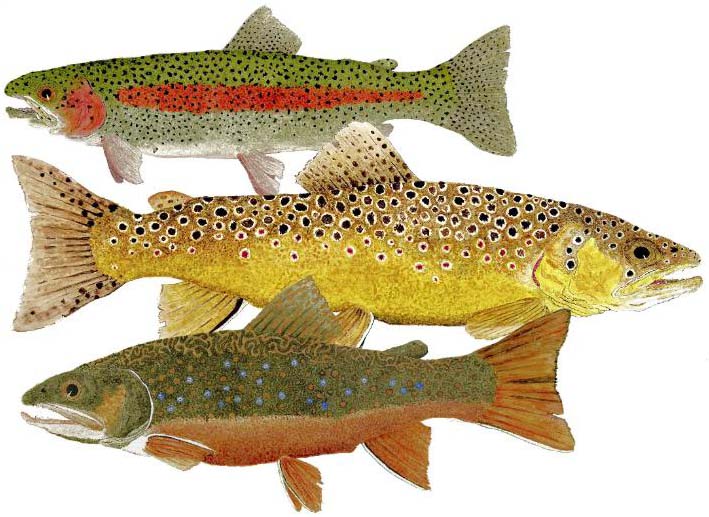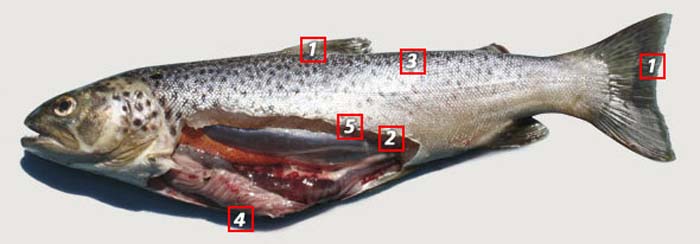
World renown watercolorist Thom Glace’s ‘Local Beauties.’ Rainbow, brown, and brook trouts.
By Skip Clement
[dropcap]S[/dropcap]o, I’ll cover my ass. As a proponent of catch and release, responsible fishery management, and hundreds of written opinions on the value of preserving the natural world as a benefit, not a sacrifice, and dedicated to keeping public lands public, I stand ready to be redressed for eating a trout.
Go ahead ridicule me. I can take it; call me a liar, hypocrite… I know you’re out there waiting to pounce
I caught it to have for dinner, purposely. It was a north Georgia foothills rainbow in the window of fair game as dictated by Georgia’s DNR – over 22-inches, but just in the limit of permitted inches. I didn’t want to kill a big homey female capable of passing on the best of genetic values. It was not a stocked fish having only a few months of embracing the natural world. The Roth’s never stocked fish that small.
I caught it and others that day, fishing on foot, pool to pool, at Angie’s family place in North Georgia. They stock “big” bows, but not browns or the occasional brookie that gets washed down a couple of time a year during significant rains. There are plenty of carry-over rainbows that will get caught on any full day of fly fishing. My rainbow was wild.
NOTE: With the assumption that they are healthy, stocked trout – like any stocked fish they have less muscle and more fat. The food cooking fact is that the stocked will probably taste better because of the fat content. That may be arguable for some, but what is not is that attentiveness to cooking wild fish being more critical to keep its taste. Burn off all the fat, and you have unsalvagable, tasteless fish. Think slow, covered, low flame, butter, add lemon and some S&P to taste. YUM!
Freshly stocked rainbow:

Above – rainbow trout (Oncorhynchus mykiss). Trout drawings and explained differences between wild and stocked by Trout Fisherman/UK.
1 Intensely farmed trout will often have ragged or split caudal fins and fins due to tail-nipping by other fish, rubbing against concrete raceways and handling through grading. From fingerling to stocking, a fish can is graded as many as three or four times.
2 Greater fat deposits, especially belly area.
3 Pale skin color.
4 Fatty body cavity with various organs less defined.
5 Different color pink flesh because of food pellets contain a dye to make the flesh more attractive.
Wild brown trout:

Wild brown trout (Salmo trutta).
1 The freedom to swim in open water allows fin damage to repair helping full fins and sharptails to develop.
2 Muscle is leaner and therefore fish fight hard for more extended periods.
3 Skin color is more pronounced and defined to aid camouflage.
4 Hardly any fat in the body cavity means all organs are readily distinguished.
5 Wild trout only have pink flesh when their diet is mainly shrimp-based. Otherwise, flesh is pale, almost white.
Note: Trout drawings and explained differences by Trout Fisherman/ UK . . .






